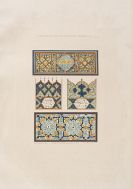
Marcus Vitruvius Pollio
Marcus Vitruvius Pollio was a famous Roman architect in the 1st century BC. Little is known about his childhood. He is thought to have been born in Verona, even though this has not been entirely proofed.
In his lifetime, Vitruvius became famous as an architect to the emperor Augustus and his work "De architectura", which is a summary of his own experience in the field of architecture.
The work, consisting of 10 volumes, was written around 15 BC and dedicated to the emperor. It is thought to be the only direct source on antique architecture and had a considerable influence on the Middle Ages and Renaissance. In the books, Vitruvius explained the theory of the architectural order of pillars, as well as shapes and types of temples and introduced rules for the design of houses.
Alongside actual architecture, he also dealt with technical objects, e.g. the so-called "Tympanum" (for the transport of water), flour mills, waterscrews, thermal springs, sundials and various technical tools aiding construction. Great architectural writers of the 15th to 17th century, including Alberti, Vignola, Palladio and Selio based their theories on Vitruvius's "De architectura".
The first printed edition of Marcus Vitruvius Pollio' work appeared in Rome in 1486, the first illustrated edition was published in 1511 Venice.
In 1548 J. Petreius published the first German translation of Virtuvius's work in Nuremberg. This volume was annotated by Walter Ryffs (Rivius) and contained woodcuts by Peter Flötner and others.
Would you like to sell a work by Marcus Vitruvius Pollio?
Infos for seller







